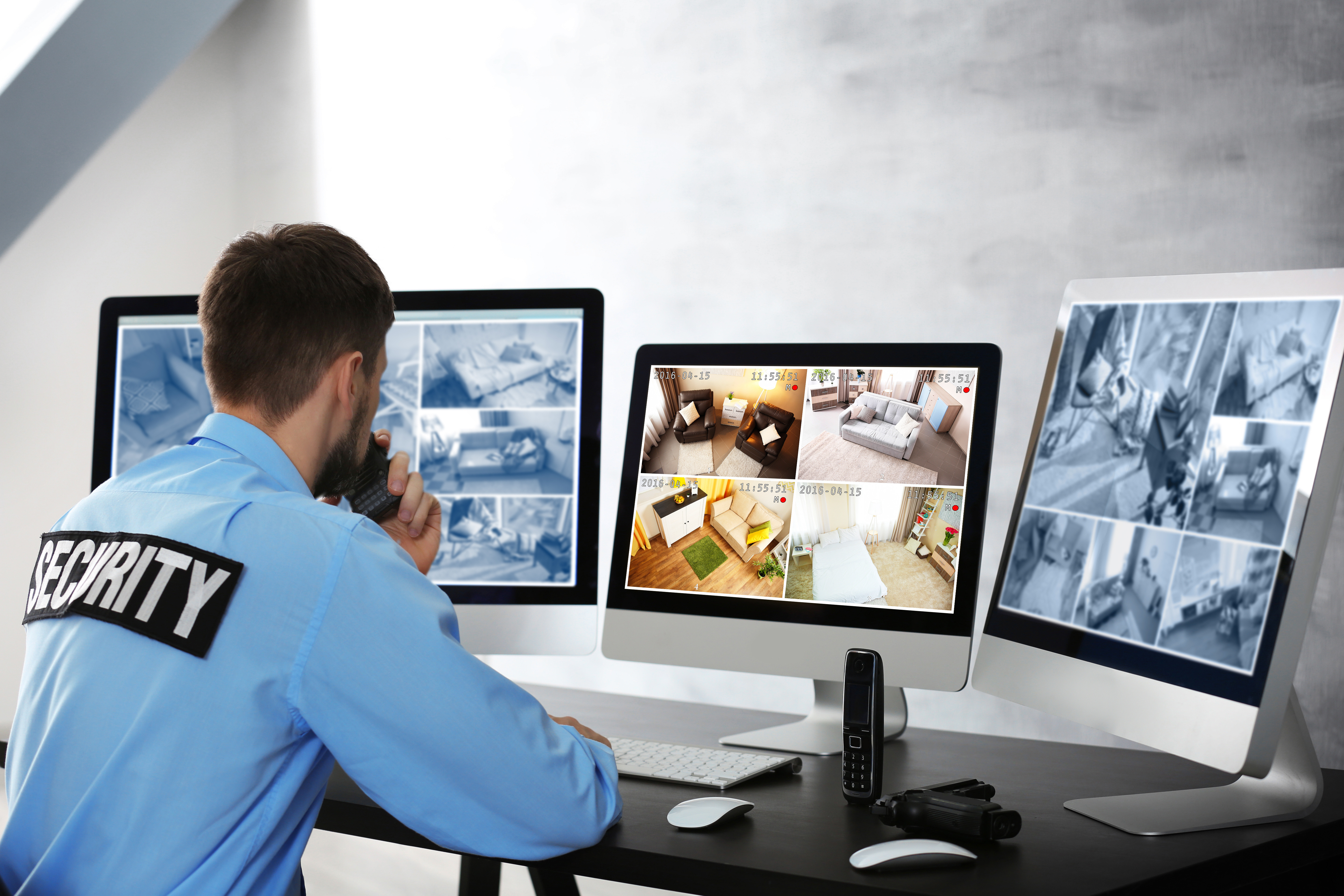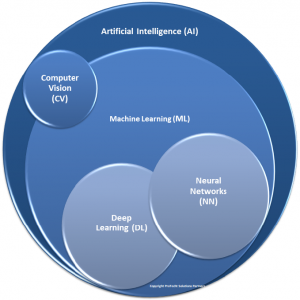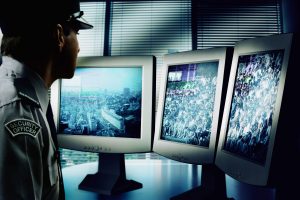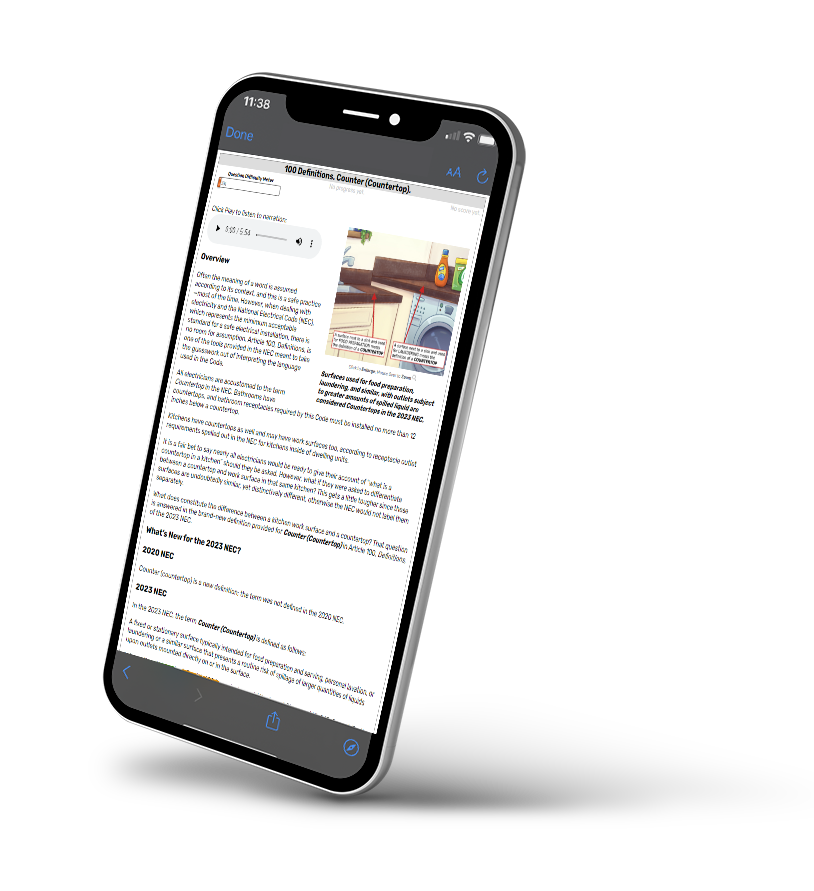Guards, Guns, Gates… and Artificial Intelligence?

By: Jon Polly | Dec 06, 2021
The security industry for many years has been split into two very distinct silos, security officers and security equipment. Interaction is typically a cursory monitoring of a property using cameras or reviewing incident data, but rarely trusted as an alternative for physical bodies.
Security officers have traditionally been responsible for being a physical presence for deterrence and for being trained to de-escalate situations on behalf of the customer, be it a proprietary officer force or a contract officer force. More recently, security technology has been the eye in the sky, meant to act as a deterrent as well as prevent unauthorized individuals’ entry. Overt cameras and signage are added as a non-verbal warning that the property is under surveillance, with the underlying thought that nefarious actions will be thwarted.
 Today, these two silos are being intertwined, as many traditional guard companies and video monitoring central stations are realizing the value of Artificial Intelligence (AI) powered analytics. But what are artificial intelligence analytics, really? Simply put, they are taught, or sometimes self-learning, algorithms. When time matters, these processes provide useful information for required decision making. Analytics may be simple, such as intrusion or line crossing, or detailed, such as time and movement based, or deep learning algorithms where the device learns the scene and alerts based on scene changes. Analytics are at their core, a tool, not a replacement for the human. They are to augment, not abolish, the security officer.
Today, these two silos are being intertwined, as many traditional guard companies and video monitoring central stations are realizing the value of Artificial Intelligence (AI) powered analytics. But what are artificial intelligence analytics, really? Simply put, they are taught, or sometimes self-learning, algorithms. When time matters, these processes provide useful information for required decision making. Analytics may be simple, such as intrusion or line crossing, or detailed, such as time and movement based, or deep learning algorithms where the device learns the scene and alerts based on scene changes. Analytics are at their core, a tool, not a replacement for the human. They are to augment, not abolish, the security officer.
Proactive vs Reactive
While security cameras are not the only AI enabled security device, they do carry the lion’s share of AI innovation. It is important to understand what a camera is. A camera is a reactionary tool used to capture images up to real-time, approximately 30 times a second. To run AI powered analytics, the camera must be an IP (Internet Protocol) camera, which makes it an Internet of Things (IoT) device. Most AI powered analytics require a minimum of 2MP (1080p) resolution or more.
As mentioned, a camera is reactionary; by its nature it requires a human to review, interact, or do something with the data provided. AI powered analytics do not remove this requirement but offer the camera or other security device the ability to do the processes a human had to do in the past, within milliseconds versus seconds. While these devices have historically only been tools where a security officer made a reaction to something that occurred, AI powered analytics are now offering proactive solutions that through integration, can trigger additional responses that occur instantaneously, where human responses may be too slow. Proactive tools help provide valuable information that security officers may not see with the human eye.
Incident Management in Guard Language
While proactive tools may help prevent unauthorized occupancy of an area, guard companies are now finding they have other capabilities as well. There is no shortage of incident management software providers in the guard space that are tying in the AI powered analytics from the security devices into a single incident management interface. These can be quite simple for a single property or can be deployed for global implementation. Either way, the industry is seeing guard companies adopt more platforms that offer a multitude of tools, in the language of Security Guards.
That is not to criticize Security Officers, there is an underlying language that security officers speak; post orders, tactics, situational awareness, incident, threats, and more industry vernacular to name a few. These are not topics that most citizens discuss regularly. Because of this, many of the situational awareness platforms can input guard company-specific responses into the platform. This allows a monitoring station or a remote security officer to respond with the defined procedure in front of them, alleviating valuable time looking for binders or other incident response controls.
 Today, there are both remote monitoring services as well as traditional guard companies implementing personal safety apps for customers; apps that allow the security officer to be physically elsewhere, using the camera and microphone on a phone, to provide the situational awareness, calm the phone holder, verbally respond to threats, and call local law enforcement or onsite security officer(s) for emergency response. There are many companies that have expanded to offer both physical security officers, as well as remote monitoring services.
Today, there are both remote monitoring services as well as traditional guard companies implementing personal safety apps for customers; apps that allow the security officer to be physically elsewhere, using the camera and microphone on a phone, to provide the situational awareness, calm the phone holder, verbally respond to threats, and call local law enforcement or onsite security officer(s) for emergency response. There are many companies that have expanded to offer both physical security officers, as well as remote monitoring services.
The Future of Guards, Guns, Gates, and AI
Technology and innovation are moving faster now than ever before. So fast that even academics cannot keep up with the changes. Security technology innovations are being implemented at every level, and yet full AI adoption is still 3 to 5 years away, or more. What this means is security technology will continue to get smarter and provide faster and more accurate responses to trained or self-taught inferences of data, providing better information to humans.
As the industry moves forward, additional security technology will help streamline security officer staffing, decrease response times, both human and technology alike, and provide better evidence when incidents arise. Today, security robots and drones are being added to the security officer lineup. Body cameras are now required by guard companies to act as a deterrent, capture on-body evidence, provide real-time situational awareness, and after-action review and training.
Conclusion
For many years, Security Officers have been responsible for monitoring properties using cameras, but these cameras were not intended replacement for the physical person, and this is still the case today. Cameras can augment and help reduce staffing levels, but they cannot replace humans. AI powered analytics can provide valuable intelligence that makes the cameras, along with other security technologies, proactive solutions that can speed up security responses. This trend has not gone unnoticed by many of the companies offering Security Officers, remote monitoring services, or both.

